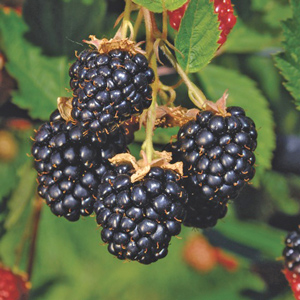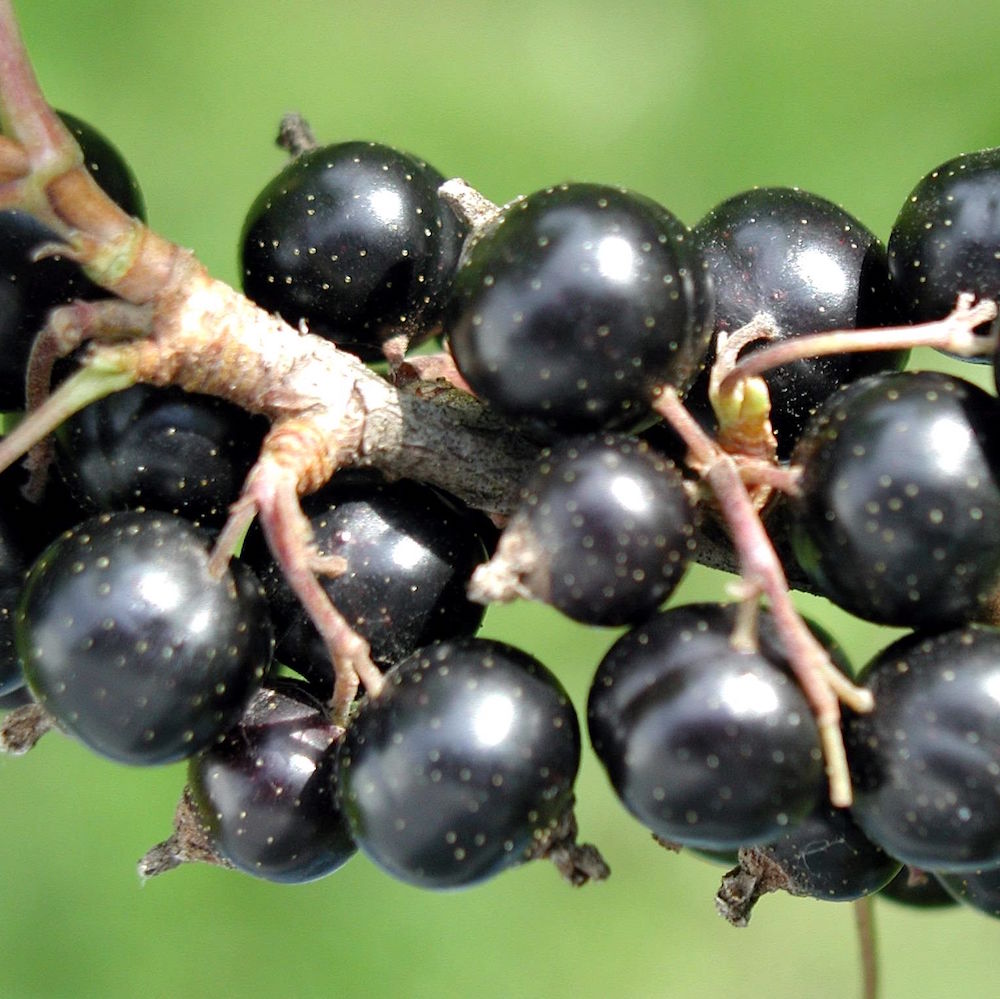- Shop
- Apparel
- Berries
- Books
- Bundles
- Citrus
- Fertilizer & Pest Control
- Fruiting Ground Covers
- Fruiting Shrubs
- Fruiting Trees
- Herbs, Spices, and Teas
- Mason Bees
- Nitrogen Fixers and Companion Plants
- Northwest Natives
- Nut Trees
- Ornamentals & More
- Perennial Vegetables
- Rootstock
- Subtropical Fruits
- Tools
- Vines
- Xeriscape
- Sale Items
- Information
- Nursery News
- Contact Us
- My Account
10 Easy To Grow Superfruits
What makes a Superfruit so “Super”? Scientists don’t actually agree on what actually makes a food “Super”, but we won’t focus on the nomenclature in this article. Instead, we are going to celebrate what we think makes these fruits so “Super” to have in your own backyard. Perhaps we should use a different term like “Extra Nutritional Food”, but it doesn’t quite sound as fun as super fruits. The one common theme we see between fruits that have been dubbed super fruits is either an abundance of a particular vitamin, fatty acid or mineral, or the presence of some nutrient we don’t typically see a lot of in our diets. Many of these fruits have particularly dark skin and flesh due to the high number of antioxidants contained within them.
- Dense in Nutrients
- Rich in Color – High Antioxidants
- High in Vitamins & Minerals
- Unique potentially healthful compounds
We will highlight the so-called “Super” aspects of each fruit along with some historical and cultural information. But before we dive in, let’s not forget there really isn’t any edible fruit that is bad for you. Fresh fruit is critical to one’s health and growing them in your own yard is often the only way to get these amazing fruits on your table that haven’t made it onto the grocery store shelves or even the farmers market yet. Growing your own fruit and eating or preserving the harvest at peak ripeness makes them all “Superfruit”.
So grow a Superfood edible landscape or just a few potted plants and enjoy the benefits of eating fresh, nutritious, homegrown fruits.
Aronia
Aronia Berry is one that tops the list for ease of growing. Also known as Chokeberry because of the astringent tannins. Our cultivars are much improved over the wild relatives found in Eastern North America. It is both cold and heat tolerant and can be grown in USDA Zone 3 through 8. It loves to be close to water and thrives in flood prone areas. What makes Aronia so special and nutritious is its deep black color. Commercial smoothie bottlers even process the berries for a natural coloring agent. That rich dark purple color makes Aronia high in Antioxidants, especially Anthocyanins. So high are these plant compounds that Aronia is known to have the highest level of anthocyanin measured in any fruit!

Blackberry
Blackberries are amazing! If you live where it grows wild you know it can form an impenetrable barrier. But while the wild blackberries might act like a bit of a weed, the cultivated ones we carry are much tamer and have fruits delicious enough to win over even the most veteran wild blackberry hacker. We now have 19 varieties available and each one is quite unique. We have thornless, giant, and even white Blackberries. What makes them so special is they are high in fiber, Vitamin C, and K. The dark color in some is also high in Anthocyanins. The newest improvement in Blackberry plants is the thornless & upright cultivars like Triple Crown and Columbia Star. These plants can produce a 30-pound harvest each year!

Black Currant
Black Currants are at the top of the list for their potent phytochemicals and incredibly high vitamins, just 100g of Currants provides 218% of the recommended daily value of Vitamin C. Black Currants have been cultivated since the 11th century. To this day, it is used in flavoring many types of beverages like Kir and Ciders. You can eat them fresh but the tart flavor is preferably made into drinks, jams and other preserves. Our favorite is to make a syrup that can be added to pretty much anything.

Blueberry
We all know Blueberries are good for us and wonderful too, but did you know Blueberries come in so many variations? There are early, middle, and late ripening Blueberry bushes. There are also Pink Blueberries, which sound strange at first but skeptics are quickly won over after tasting them. We even have the double cropping Sweetheart blueberry now. We think everyone deserves the experience of tasting fully sun-ripened blueberries at the peak of their nutritional value. Most store bought Blueberries are picked weeks before maturity so that they last on store shelves, making for a berry that is less flavorful and nutritious than homegrown berries. Many blueberry varieties are so soft and delicate when fully ripe that they cannot be brought to market at peak ripeness. That’s why we suggest growing your own blueberry bushes and enjoying the peak flavor and nutritional value of perfectly ripe, fresh picked berries. Blueberry fruit might not be the highest source of Antioxidants, but it is arguably the most delicious. Smaller fruited wild types are much higher in Anthocyanins like our Evergeen Huckleberry. or the new Nocturne Blueberry.

Grape
One of our most versatile and iconic super fruits, grapes have been eaten fresh, dehydrated into raisins or made into wine for over 8000 years. The fruit is one of the only ones in nature to contain enough tannins, sugar and natural yeast to ferment and preserve itself, as if the botanical gods were begging us to ferment them into wine. Whether you want to start your own winery or plant some table grapes and eat them fresh, we have the grapes for you. And when you can’t eat all the grapes you’ve grown, make grape juice! Trust us that homemade juice will be the best tasting grape juice you have ever had. And if you can’t drink all your grape juice, make wine! Also the leaves are edible and have been attributed to many healthy properties so roll up some delicious dolmas after you prune your grape vines to allow extra sunlight to hit those ripening grape clusters.

Honeyberry
You won’t find these berries in a grocery store so you definitely have to grow a row of your own. Honeyberries are a Superfruit because of their high Vitamin C and Quercetin content which gives them their dark color. Native to Japan, they are also called Haskaps, the name given to them by the ancient Ainu people. Modern Japanese culture still enjoys a wide variety of fruit products made from this native fruit. Honeyberries are great for fresh eating and is the first fruit of spring, even before strawberries! It’s best to net them from the birds and let them get fully ripe when they are sweet and dark. This attractive bush is actually a type of Honeysuckle and is available in early and late flowering varieties. Growers in cold climates should grow late flowering honeyberries but if spring frosts aren’t an issue, go with the early flowering ones.

Kiwi
Kiwi is an incredibly diverse fruit. You may know of the fuzzy green ones that are commonly found in grocery stores but Kiwis come in all colors, shapes and sizes. They do all have one thing in common, which is that scientist consider them a Superfood! The Kiwi fruit is loaded with Vitamin C and K and prebiotics, especially if you eat the skin. One unique property of Kiwis worth mentioning is their extremely high concentration of soluble enzymes. Kiwi enzymes have been shown to improve overall digestive function. In fact you cannot mix dairy and Kiwi because the enzymes will digest proteins! Sorry to burst your Kiwi ice-cream bubble. Kiwis are best enjoyed when grown at home, picked before a freeze, and allowed to ripen at room temperature. Enjoy your own homegrown Kiwi fruit and choose between the Fuzzy, Hardy, Arctic Beauty, or Silver Vine Kiwi varieties. The Arctic Beauties, Silver Vines and Hardy kiwis are much more tolerant of shade while the Fuzzy Kiwis prefer full sun, so there is sure to be a kiwi to grow in any situation so long as the soil is well draining.

Mulberry
Mulberry trees are grown all over the world. OGW offers some of the best fruiting and tasting cultivars. We have both bush and tree forms and fruits that range from pure white to lavender blushed to deep purple black. They all are high in Iron & fiber. The darker ones are also high in antioxidants and Vitamin C. The easiest to grow is our North America native cultivar called Illinois Everbearing which grows to around 15 feet with pruning. These plants have many medicinal and traditional uses throughout history. Traditional Chinese Medicine says the fruit is good for improving blood flow. Dried White Mulberries are high in protein and may actually lower blood sugar levels. You can even feed the leaves to silkworms if you want to start your own modern day silk farm and harvest some fruit too!

Pomegranate
Pomegranates have long been a symbol for health and fertility and today we know that the red fruit is not only delicious but also packed with healthy nutrients, tannins, and loads of soluble fiber from the seeds. Many researchers are studying the benefits of eating Pomegranates. They believe the fruit has beneficial anti-inflammatory, digestive, and heart-healthy properties. We know humans have been eating them for over 7,000 years so there is surely something intriguing about them. Our varieties are plenty cold hardy in the Pacific Northwest west of the Cascade Mountains. Just be sure to give them the hottest, sunniest spot in the garden you can in order to ensure ripe fruit.

Sea Berry
The nutritional qualities and medicinal value of the Sea Berry plant and its fruit have long been valued throughout many parts of the world. To really understand the many properties and components of this amazing plant would fill an entire book, but we will touch on a few of its wonderful qualities here. Let’s cover the major reasons why Sea Berries are such a powerful Superfruit. The first thing you notice is the super bright orange sun-like

